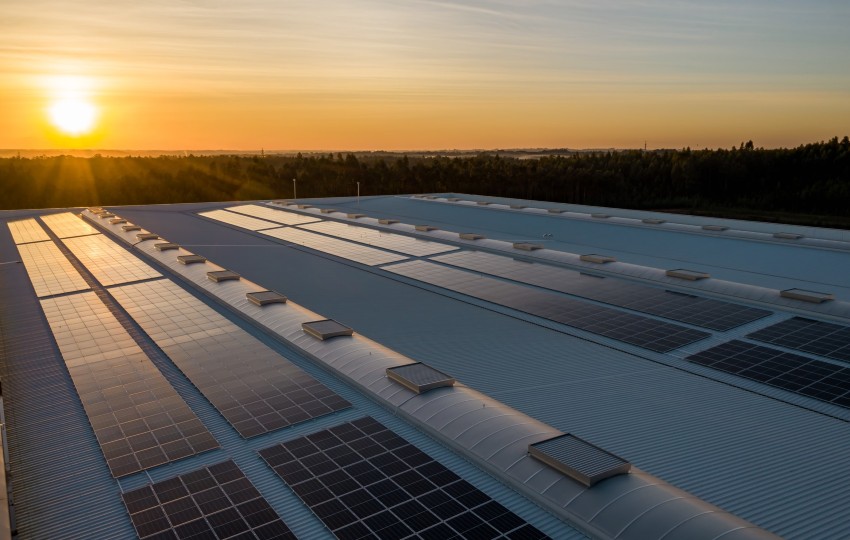Sustainable technology or green technology deals with the short-term and long-term impact of things on the environment. Green technology takes the form of recycling, renewable resources, health and safety issues, energy efficiency, and more.
Green technology gives people hope to turn around pollution and the effects of climate change. It is easier to captivate clean energy from resources such as sun and water through these technologies and revolutionize the energy sector. This blog reveals seven green technologies for a sustainable future.
Waste management and recycling
With modern technology, industries and households can adopt a zero-waste lifestyle by separating recyclable waste from non-recyclable ones.
The unsorted waste can be divided into a fraction for recycling and another one to be used as fuel.
The liquid becomes the main product as nutrients from that waste dissolve and make biogas. The other advanced recycling technologies could solve the problem of plastic waste. For instance, chemical recycling is about using chemicals to break down plastic waste into useful chemical components. The chemical elements can turn into fuel or plastic products for later use. Waste management and recycling lead to a fresher and better environment, keeping people free from diseases.
Generating energy from waves
The energy from currents, tides, and waves, commonly known as ocean energy, is an excellent resource for sustainability. The total ocean energy along the continental shelf of America can serve a significant portion of the population. Some companies are using underwater buoys for wave conversion into desalinated and zero–emission energy. The steel buoys can generate many kilowatts of power, and cannot extreme weather cannot damage them.
The pumps drive the water to power plants located onshore, and the water spins water under high pressure to generate electricity free from carbon. The power generation system can also power a desalination plant making the electricity price competitive with diesel. Tidal energy is also promising because it is consistent and predictable and can transform the energy market.
Energy is currently a hot topic in the European Union in its transition to a more sustainable and energy-efficient future. You can read about the REPowerEU plan that the EU presented in 2022 to learn more.
Vertical farms and gardens

Vertical farming can solve food production issues due to its eco-friendliness. The idea is to grow crops in vertical layers instead of growing them horizontally. Vertical farming leads to increased sustainability, with some farms not requiring any soil input. With this eco-friendly technology, economies can build farms around cities and supply people with nutritious and fresh food. The latest innovations in vertical farming, including the intelligent root misting system, let the farms use water more efficiently than regular fields.
Vertical farms can feed cities with dense populations while using less water and land. They also help reduce greenhouse gas emissions because there is no need to transport the farm produce over long distances.
Water purification
Over the years, there have been massive cases of water wastage in various states. The earth can recycle water naturally, although new green technologies can speed up the process and create s sustainable future. The surface water and the groundwater supplies are exposed to the risk of being overused where demand could exceed supply. According to the United Nations Water agency (UN water), over 80% of society’s wastewater goes to the ecosystem without reusing or treating.
The latest water purification developments include microbial fuel cells, membrane filtration, natural treatment systems, and biological treatment development. These processes aim to make water fit for consumption while reducing pollutants from the rivers and the sea.
Electric vehicles
Electric vehicles are advancements of regular electric cars because they are eco-friendly. The vehicles come with devices that can receive power remotely through electromagnetic field broadcast supported by underneath cables. The vehicles are being tested in some countries, but their massive production will change people’s perception of driving.
The automotive industry remains one of the most significant environmental hazards, although many people depend on cars. The number of vehicles on the roads is high, and it’s expected to increase in the future with the rapid growth in India and China. The EVs are alternatives to regular motor vehicles to reduce environmental pollution.
Solar energy

The use of solar energy is now on the rise among industries and households. Scientists are coming up with new designs of solar panels to collect energy from the sun and the rain. The all-weather solar panels enable households to produce enough electricity for domestic use regardless of their geographical locations. The panels generate power from the rain’s force during the rainy season and ensure a constant supply.
Solar energy is good for the environment because it reduces air pollution and uses less water. Generating electricity from fossil fuels can emit methane gases and carbon dioxide that is harmful to human health. Generating power from solar panels does not cause harmful emissions, so businesses and homes can rely on it. The functioning of solar photovoltaic cells requires no water for electricity generation- it is a great means of water conservation.
Green architecture
Green architecture can reduce the urban source significantly, making the expansion of urban centres sustainable. The technology allows buildings to be constructed in a self-sustainable manner- they can use the available natural light and are adequately insulated. Green architecture construction practices reduce energy consumption by eliminating additional heating needs. Landfills and urban waste can provide the construction materials, which is also an added advantage.
This green technology may soon enable buildings to be “self-sufficient”- not requiring additional emissions for use and production. The modern solar panels installed on buildings can generate energy to produce hot water through a heat exchanger. The household can access free hot water sourced in an eco-friendly or sustainable way.
Conclusion
With the above technologies, companies realize that that change should happen soon. Resources are becoming scarce, but the demand is increasing, calling for the need to find a balance and create a sustainable future. With green technologies, the world will reach sustainability levels, and the environment will be cleaner and safer for all.
Author Bio
Charlie Svensson works for a dissertation service as the lead writer, editor and proofreader and is also interested in custom essay writing and blogging. He covers various niches, some of them being travel, technology, social sciences, personal growth, career and education, etc. He writes for a wide base of audience and always impresses with his meticulous writing skills.

